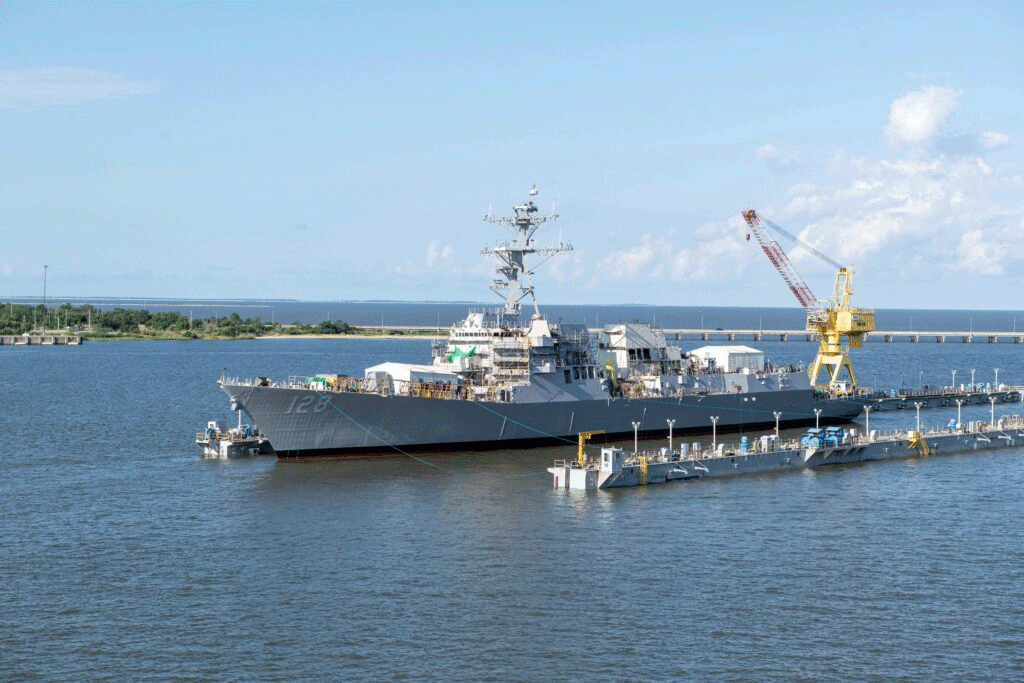II’s Ingalls Shipbuilding division announced the successful launch of the Navy’s third Flight III Arleigh Burke-class destroyer Ted Stevens (DDG 128).
“The translation and launch are always important milestones for our shipbuilders and the life of a ship,” Ingalls Shipbuilding DDG Program Manager Ben Barnett said. “Our team has put in a tremendous amount of work leading up to the launch, and I am proud to see them bring DDG 128 one step closer to completion.”
Prior to launch, DDG 128 was translated from land to the dry dock using translation railcars to support the ship. Once in the drydock, the ship is prepared to launch.
Ted Stevens is the 76th Arleigh Burke-class ship, and its name honors former U.S. Sen. Ted Stevens, who served as a pilot in World War II and later as a U.S. senator representing Alaska. At the time he left office in 2009, he was the longest serving Republican U.S. senator in history.
Ingalls has delivered 35 Arleigh Burke-class destroyers to the U.S. Navy including the first Flight III, Jack H. Lucas (DDG 125), in June of this year. In addition, Ingalls Shipbuilding has four Flight IIIs currently under construction and was awarded an additional six destroyers earlier this month. Ted Stevens will be christened Saturday, Aug. 19, while Jeremiah Denton (DDG 129), George M. Neal (DDG 131) and Sam Nunn (DDG 133) are also under construction at Ingalls.
Flight III Arleigh Burke-class destroyers built for the U.S. Navy incorporate a number of design modifications that collectively provide significantly enhanced capability. Flight III includes the AN/SPY-6(V)1 Air and Missile Defense Radar (AMDR) and the Aegis Baseline 10 Combat System that is required to keep pace with the threats well into the 21st century. Arleigh Burke-class destroyers are highly capable, multi-mission ships and can conduct a variety of operations, from peacetime presence and crisis management to sea control and power projection. Guided missile destroyers are the backbone of the U.S. surface fleet and are capable of fighting multiple air, surface and subsurface threats simultaneously.

